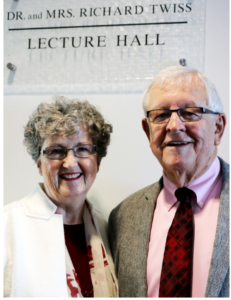A Heart for Heritage – Wings Spring 2024

When Dick and Pat Twiss made the Yakima Valley their home 57 years ago, they brought with them a passion for making a difference in the lives of those around them. Dick, now a retired cardiologist, dedicated 45 years to delivering essential medical care that not only extended the lives of his patients but also enhanced their overall well-being. His expertise was literally lifesaving, fostering longer and healthier lives for countless patients.
However, the Twisses’ impact goes beyond the medical realm. Together, their shared commitment to elevating the quality of life in their community led them to support many civic endeavors and eventually to Heritage University, where they became a transformative force. Their dedication has unlocked doors of opportunity through education for countless individuals. While maybe not lifesaving in the same way as a heart surgeon, the lives they have touched have been transformed in meaningful ways.
Dick and Pat Twiss have orchestrated a narrative of community enrichment. Their story is a testament to the profound influence that compassion and commitment can have on both the individual and the community at large, creating a legacy that resonates with the transformative power of education and the ripple effect of philanthropy.
The Twiss’ Heritage story began shortly after the university began in the early 1980s. A colleague told Dick about “a couple of nuns” from the Sisters of the Holy Names of Jesus and Mary who had started a college in rural Toppenish, Washington, just a few miles south of Yakima.
“I was educated for 12 years in The Dalles by the Sisters of the Holy Names,” said Dick, who grew up in the small Oregon town. “I was familiar with sisters’ work in primary and secondary education and was curious about what they were doing in Toppenish. I asked my colleague to introduce me to the sisters so I could learn more.”

Pat and Dick Twiss
Dick and Pat traveled down to the fledgling campus and met with Sister Kathleen Ross, Heritage’s founding president. At the time, Heritage had only been operating for four years. It was little more than a few classrooms in a former elementary school and a library created from books handed down from its predecessor school, Fort Wright College. As they toured the school and met with Ross, they also talked to a few of the students, and faculty and staff.
“We were impressed by the work being done and by the students we spoke to,” said Dick. “They were all so dedicated, and the students were eager to learn. Sr. Kathleen and her staff were creating an environment and teaching style unlike anything else. It was specifically designed so that the students they were working with would be successful. For the most part, these students were low-income, minorities and the first in their families to go to college, and they had no other options available to them to earn a degree.”
That first meeting sparked a nearly four-decade-long relationship that helped build the institution as it stands today. Their financial support has funded student scholarships, including an endowed scholarship in their name dedicated to helping students studying to enter the medical field, helped student clubs travel to national competitions, and helped build a thriving campus. They even expanded the footprint of the university when they purchased the old Toppenish Grange, which sat across the roadfrom the college, and gifted the property to Heritage. That old building was used for many years as an art room and meeting hall before the property was converted to house an early learning center.
As impressive as their generosity towards Heritage is, their commitment goes much deeper than their financial support. Dick spent a total of 21 years on the board of directors, once from 1990-2002 and a second time from 2007- 2016, and he was the Board Chairman from 2007-2009. He’s been part of the leadership team at almost every significant milestone in the university’s history: every multi-million-dollar capital campaign, the construction of nearly every building on the campus, the development of some of the university’s most successful academic programs, and the transition of leadership when Ross announced her retirement and the subsequent national search and hiring of Heritage’s second president, Dr. John Bassett.
Dick and Pat have also been fixtures at many of Heritage’s key events. They cheered on their favorite team at the polo fundraising events that took place during the university’s early years. They’ve attended every Scholarship Dinner. They were there for the openings of ten campus buildings, including the Arts and Sciences Center, Petrie Hall, Kathleen Ross snjm Building, the Martha B. Yallup Health Sciences Building and Violet Lumley Rau Center. They were part of the crowd of supporters who celebrated Ross when she retired and welcomed both Bassett, and current president Dr. Andrew Sund, at their inaugurations. And they have been among the scores of families and friends who cheered for graduates as they walked across the stage to get their well-earned degrees at several commencements.
“What is truly remarkable about Dick and Pat is how great their hearts are for this university and our students,” said David Wise, vice president for Advancement. “Every time there is a need, they are among the first to step forward and say, ‘How can we help.’ Together, they’ve made more individual gifts to Heritage than any other donor. There isn’t a student at Heritage, past, present or future, whose education hasn’t been touched by Dick and Pat.”
For the couple, what first excited them about Heritage, and what has kept them such ardent supporters over the years, is the impact the institution has both on the lives of the individuals who are attending the college, as well as on the community in which it serves.
“You can so clearly see the need here,” said Dick. “The need for a university to provide education to those who are unable to go anywhere else to learn, and the need for supporting scholarship so that these students can afford to go to college.
“Education is truly life-changing for these students and their families, and we can see the impact they are making in our schools and businesses and health centers after they graduate.”
Pat added, “There are lots of colleges out there, bigger colleges, who do a fine job educating young people. But they have so many more resources available to them. We feel like, through Heritage, we are really able to make a difference.”
“We are very proud of the university,” said Dick. “It gives us great pleasure knowing that we’ve been a part of their success.” ![]()
